Oligonucleotides are essential tools in a wide range of scientific applications, from basic research in genomics to cutting-edge gene therapies and CRISPR-based gene editing. The integrity, purity, and quality of oligonucleotides directly influence experimental success, biological activity, and the reproducibility of results. Therefore, meticulous oligo analysis and purification are paramount in ensuring that the oligos meet the required specifications and are free of impurities that may interfere with the intended function.
For therapeutic oligonucleotides, impurities—even at sub-percent levels—can result in immunogenicity or off-target activity. Our robust analytical and purification pipelines mitigate these risks at the preclinical stage, enabling clients to avoid costly setbacks in later development.
At BOC Sciences, we offer a comprehensive and customizable approach to oligo analysis and purification, tailored to your specific needs. Our service is built upon advanced technologies, precise methodologies, and decades of scientific expertise. Below are the detailed oligo analysis and purification methods available through our service.
Utilizes hexafluoroisopropanol as a solvent to analyze and stabilize oligonucleotides, particularly for modified or challenging sequences.
Accurately determines the molecular weight and sequence variations of oligonucleotides.
Separates oligos by size and charge, offering single-nucleotide resolution for purity and integrity.
Measures oligo concentration and assesses purity by analyzing absorbance at 260 nm and other wavelengths.
Uses laser desorption to identify oligos' molecular weight and sequence in a high-throughput manner.
Provides detailed structural insights of oligonucleotides at the atomic level, including modifications.
Confirms oligo sequence and functionality through PCR amplification and sequencing.
Separates oligos based on hydrophobicity, providing high-purity fractions.
Separates oligonucleotides by size, allowing precise isolation of high-purity products.
A variation of RP-HPLC that utilizes ion-pairing agents in the mobile phase, enhancing the separation of modified oligos with hydrophobic or charged modifications.
Purifies oligos based on their negative charge, removing smaller fragments and contaminants.
Separates oligos based on size, removing aggregates and non-specific oligo forms.
Uses ion-pairing agents for separating oligos with hydrophobic modifications.
Removes salts and small molecular contaminants from oligos, suitable for downstream enzymatic applications.
Uses solid-phase support for quick and efficient purification of oligos with specific modifications.
Separates oligos based on size by passing them through a column filled with porous beads, ideal for eliminating aggregation or unwanted oligomeric species.
Uses specific binding interactions (e.g., biotin-streptavidin) for highly selective purification of modified oligos, such as those conjugated with tags or functional groups.
Leverages magnetic beads coated with specific ligands to selectively purify oligos with custom modifications, offering high precision and minimal sample loss.
Purifies oligos by separating them based on their charge, ideal for oligos with positively charged modifications or nucleotides.
This service involves comprehensive analysis of oligonucleotide properties such as sequence verification, base composition, and structural integrity. It ensures the oligos meet the required specifications for various research and therapeutic applications.
We assess the chemical and physical stability of oligonucleotides under various storage conditions, simulating real-world environments. This service is crucial for determining the shelf-life and optimal storage conditions for oligos.
This service evaluates the release profile of oligonucleotide-based therapeutics or delivery systems over time. It helps in understanding the kinetics of drug release, ensuring consistent and controlled delivery of oligonucleotide drugs.
Utilizes techniques such as capillary electrophoresis to analyze oligonucleotide fragments generated during sequencing or PCR amplification. It allows precise identification of sequence variants and ensures high-quality data for downstream applications.
Our RNA extraction service isolates high-quality RNA from various biological samples, providing clean and intact RNA for downstream applications like RT-PCR, sequencing, and expression analysis. This is essential for accurate gene expression studies and functional genomics.
This service enables the identification of RNA-binding proteins or other interacting molecules by capturing target RNA sequences and their associated partners. It is valuable for studying RNA-protein interactions and understanding RNA functionality in cellular processes.
Contact us today—our experts are ready and eager to assist you!
Get A QuoteAt BOC Sciences, we provide a streamlined and efficient process for oligonucleotide analysis and purification that ensures the highest level of quality control. Each step of the service is meticulously designed to meet your specific requirements and deliver optimal results.
Adjustments to solvent or buffer conditions may be made to optimize sample performance during the analysis and purification process.
BOC Sciences offers a comprehensive suite of Oligo Analysis & Purification services tailored to meet the rigorous demands of modern biotechnology and preclinical research.
With years of expertise in biochemical services, BOC Sciences is a trusted partner for preclinical oligo analysis and purification. Our team consists of highly trained scientists and specialists who leverage cutting-edge techniques and equipment to deliver results with unparalleled accuracy and reliability.
We understand that each oligonucleotide is unique, especially when dealing with modifications such as LNA, 2'-OMe, phosphorothioates, fluorophores, and other conjugates. Our purification and analysis processes are fully customizable to accommodate various chemical modifications, ensuring that even complex oligos are handled with precision.
We utilize advanced instrumentation such as high-resolution mass spectrometry (HRMS), capillary electrophoresis (CE), and liquid chromatography techniques to identify even the smallest impurities or sequence variations. This high level of sensitivity ensures that our clients receive the most accurate and reproducible data possible.
Through our rigorous purification processes (e.g., RP-HPLC, PAGE, SEC), we consistently achieve high recovery rates and excellent purity levels—often exceeding 95%. This level of purity is crucial for minimizing off-target effects in applications like CRISPR gene editing, siRNA therapeutics, and diagnostic probe development.
For critical applications such as therapeutic development and regulatory submission, data reliability is paramount. Our services provide validated methods and comprehensive reports, ensuring that the results meet both your research objectives and regulatory standards.
Choosing BOC Sciences for your Oligo Analysis & Purification needs means working with a partner that values precision, reliability, and scientific excellence. We are committed to providing you with the highest-quality oligonucleotides to support your preclinical research and development goals.
The Oligo Analysis & Purification services offered by BOC Sciences are essential for a wide range of research, development, and preclinical applications. Our services provide the critical support needed for the accurate and efficient use of oligonucleotides across numerous fields, including genetic research, drug development, diagnostic applications, and molecular biology.
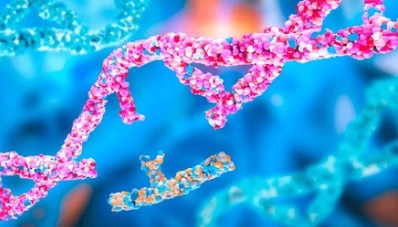
Oligonucleotides are pivotal in gene editing, especially in CRISPR/Cas9-based applications, where precise guide RNA (gRNA) sequences are essential for targeting specific genetic sites. Our Oligo Analysis & Purification service ensures that the gRNA used in CRISPR systems is of the highest purity and integrity, minimizing off-target effects and enhancing the accuracy of gene editing.
Small interfering RNAs (siRNAs) play a crucial role in RNA interference, a technique that silences specific genes. For effective gene silencing, it is vital that siRNAs are of high quality, free from impurities that could lead to unintended biological effects. Our purification service ensures the delivery of high-purity siRNAs, which is crucial for successful therapeutic applications and experimental silencing.
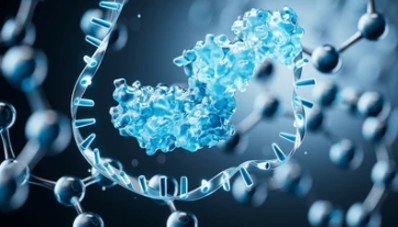
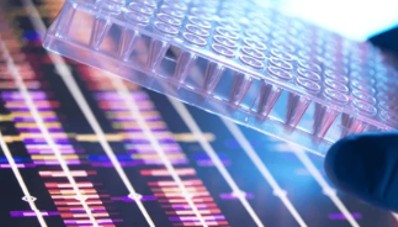
In NGS, oligonucleotides such as primers and probes are used to amplify and sequence specific regions of the genome. The accuracy and reliability of NGS results are heavily dependent on the quality of these oligonucleotides. Our Oligo Analysis & Purification service guarantees that primers and probes meet the stringent requirements for sensitivity, specificity, and purity needed in high-throughput sequencing workflows.
Oligonucleotides are commonly used in diagnostic assays for the detection of specific nucleic acid sequences associated with pathogens, genetic disorders, or cancers. To achieve reliable diagnostic results, oligonucleotides must be free of impurities and possess high specificity. Our services ensure that the oligonucleotides used in assays like PCR, LAMP, and microarrays are of the highest quality, increasing the accuracy and sensitivity of detection.
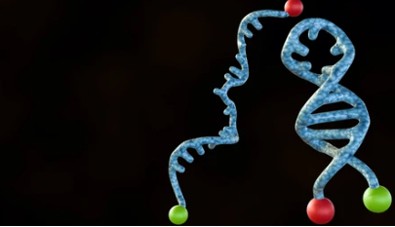
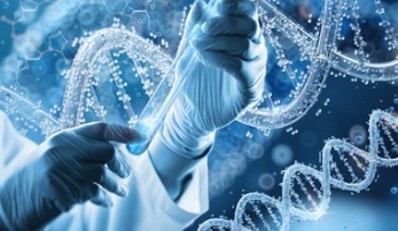
In applications such as gene synthesis and the creation of synthetic biology constructs, long oligonucleotides are often required. These constructs can be challenging to synthesize and purify due to their size and complexity. Our purification service helps to ensure that long or complex oligos, whether for synthetic gene construction or vector preparation, meet the purity standards necessary for successful application.
For the development of novel biopharmaceuticals, oligonucleotide-based therapies such as aptamers, ribozymes, and small-molecule oligonucleotides are gaining popularity. These oligos need to be of the highest quality to ensure they interact specifically with their target molecules. Our analysis and purification services play an essential role in ensuring the integrity and functionality of oligos used in preclinical biopharmaceutical development.
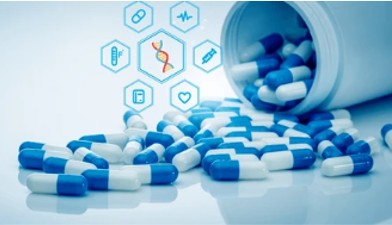
Yes. Our chromatographic methods are fully compatible with most chemical modifications including hydrophobic or charged moieties. We customize each method based on molecular characteristics.
If your oligos are being used for high-precision applications like CRISPR, gene synthesis, or diagnostics, purification is essential to remove impurities that may interfere with the desired function. Our team can assess whether purification is needed based on your goals.
Yes, we offer scalable services for large quantities or high-throughput projects. Whether you need individual or large batch oligo purification, our workflows can accommodate your scale.
We maintain stringent quality control measures and follow standardized protocols to ensure the consistency of every purification batch. Long-term clients can request regular monitoring and reporting to track the quality of the oligos over multiple runs.
For CRISPR and RNAi applications, we recommend using high-purity methods such as RP-HPLC or PAGE to ensure that the oligos are free from truncated sequences and contaminants. We'll help determine the optimal method based on your specific sequence and application.
Yes, we can perform post-purification modifications such as the addition of fluorescent labels, biotinylation, or conjugation with lipids or other molecules. Please contact us with your specific modification needs, and we'll guide you through the process.
We specialize in handling complex oligos with unusual sequences, secondary structures, or difficult modifications. Our experienced team will choose the appropriate purification method, such as AEX-HPLC or PAGE, to ensure the highest possible purity and sequence integrity.